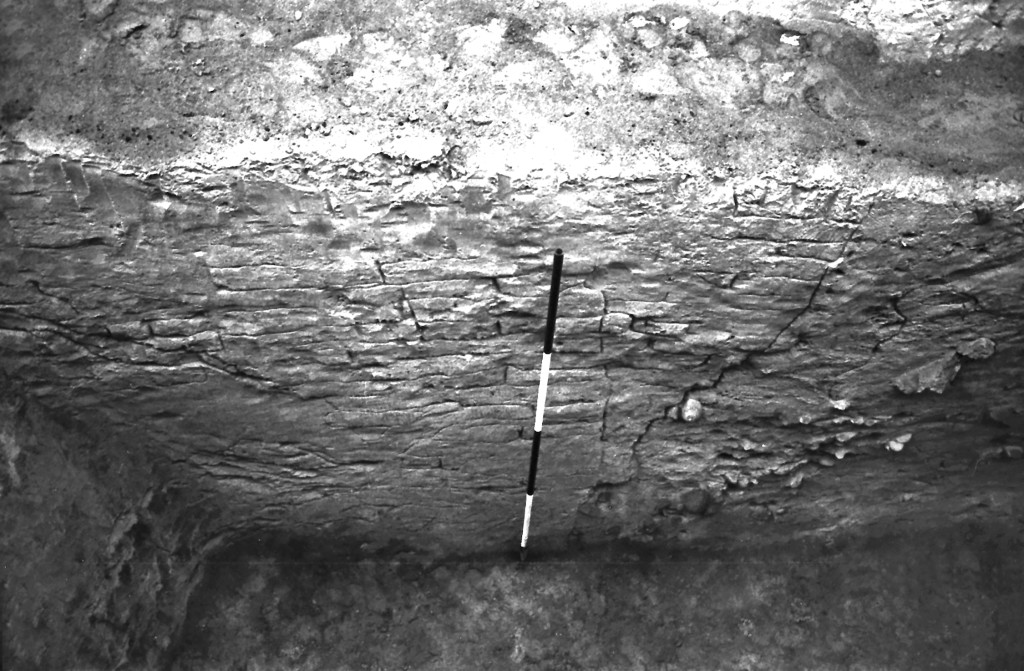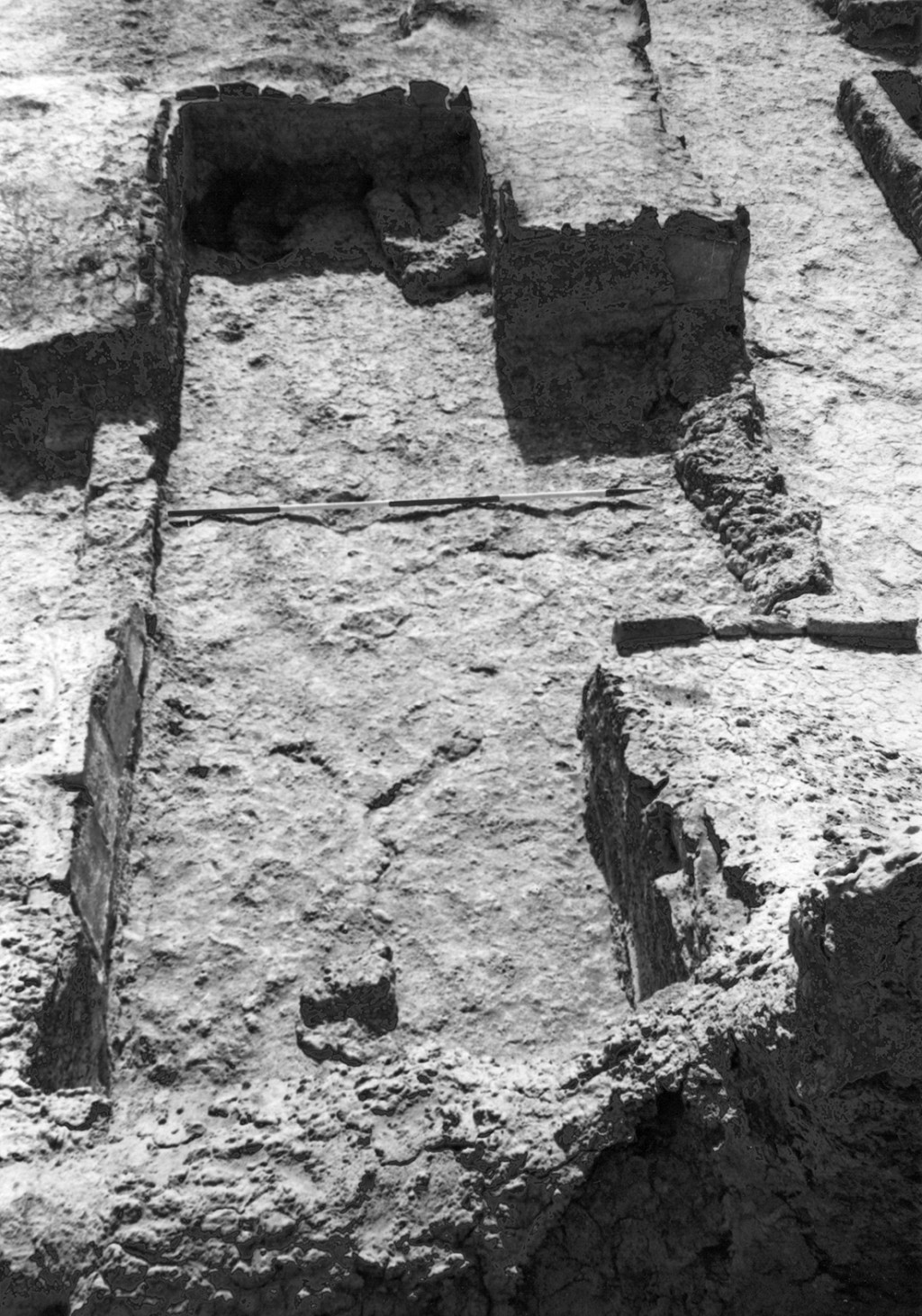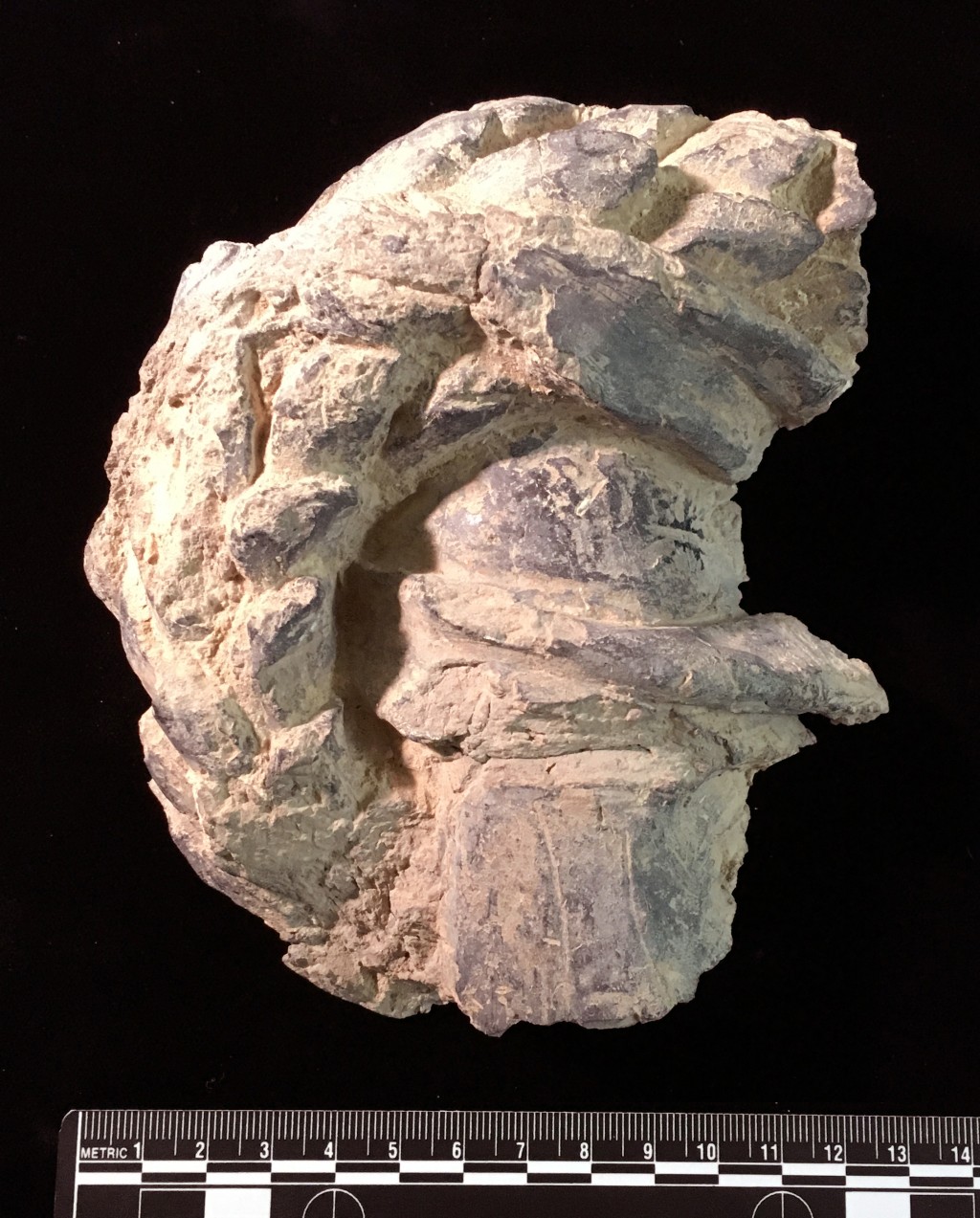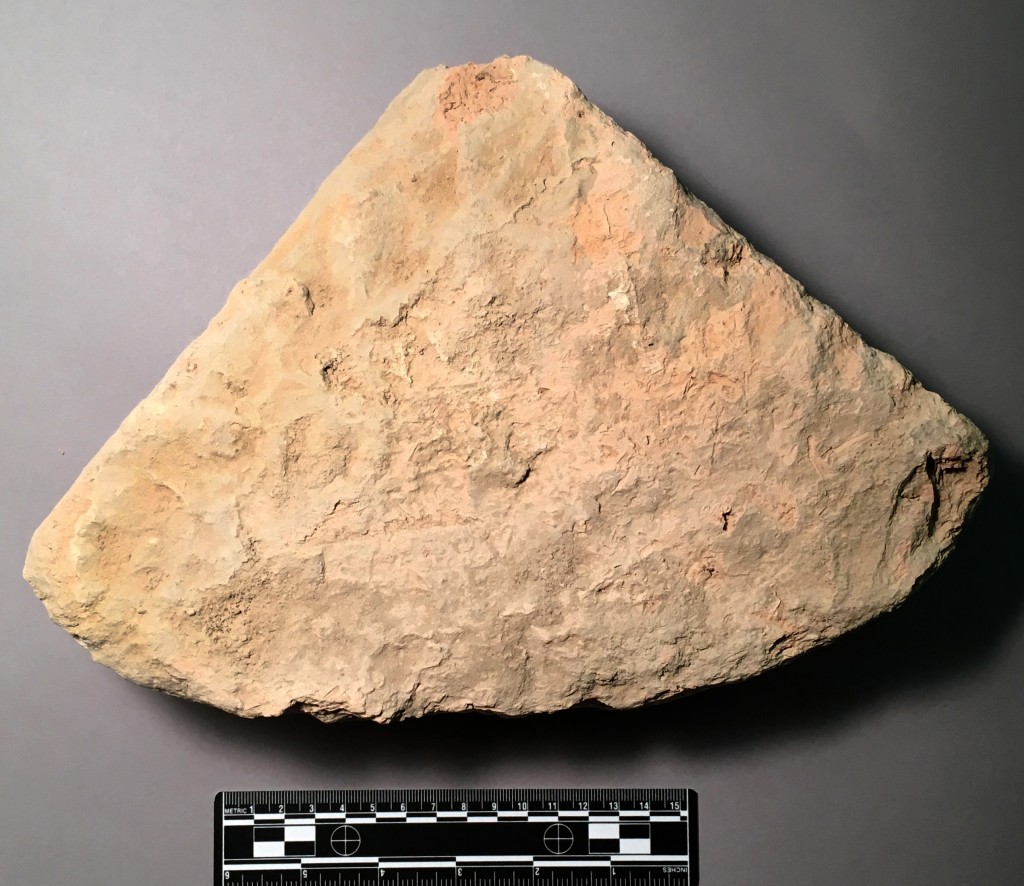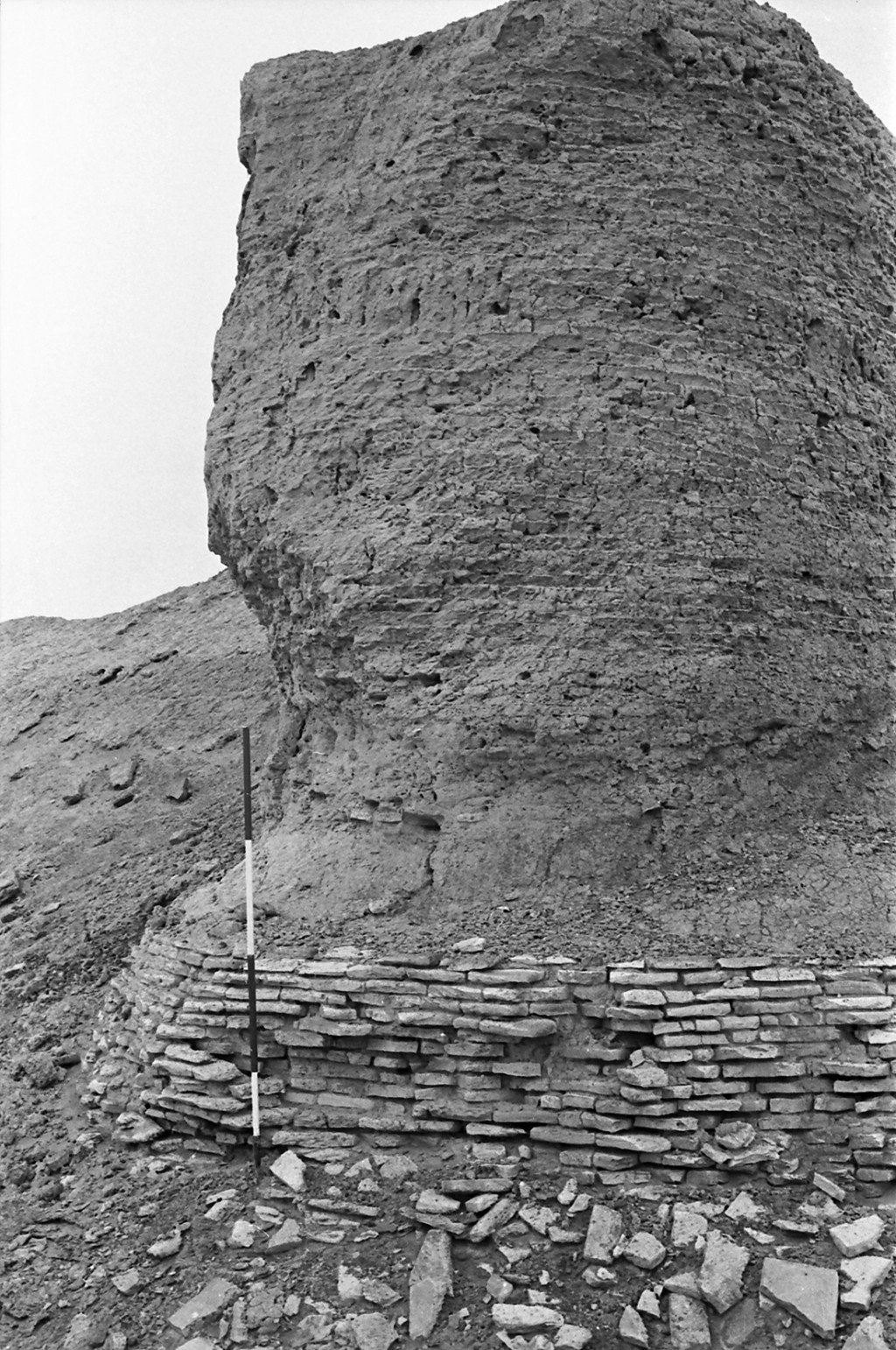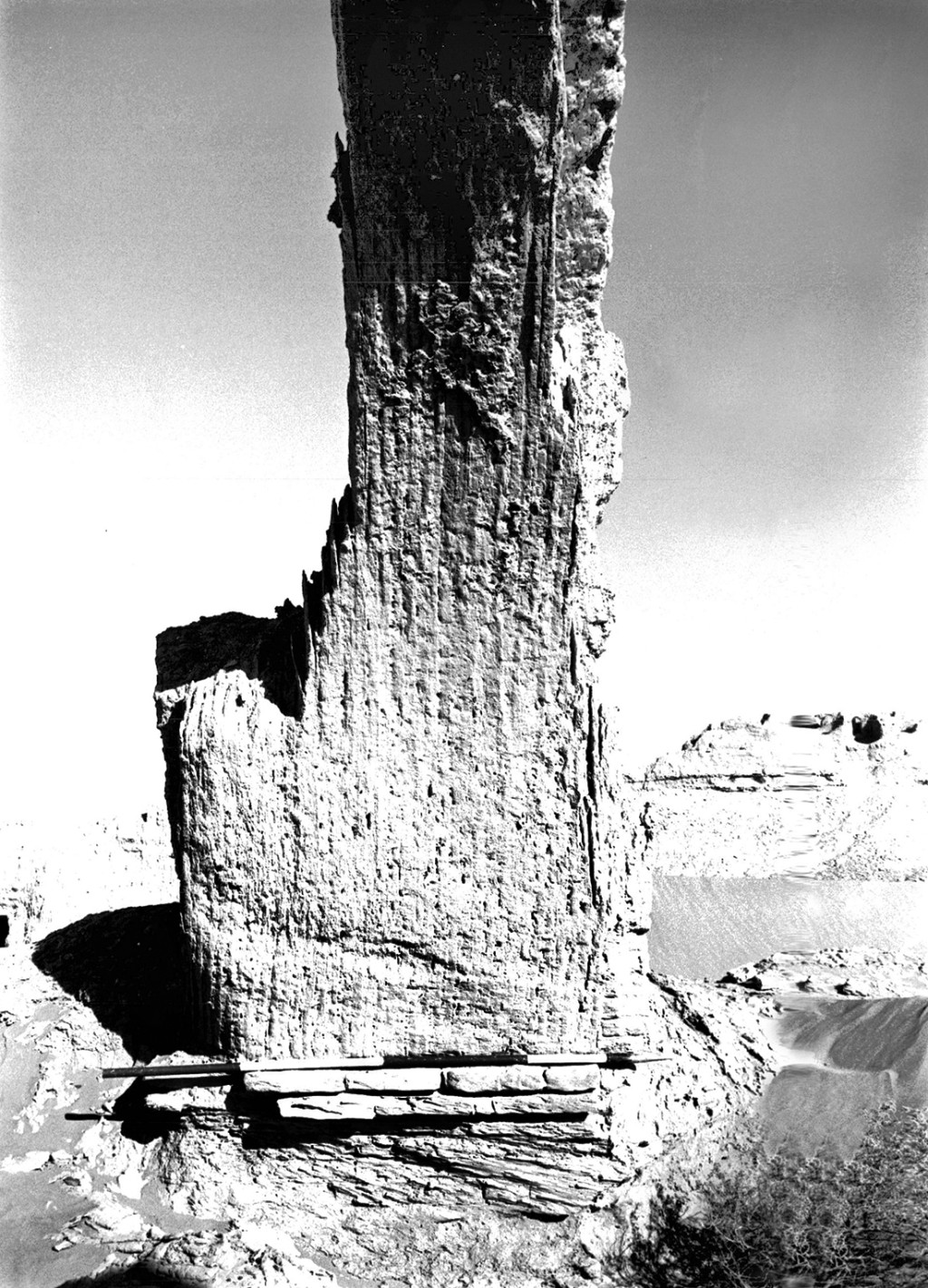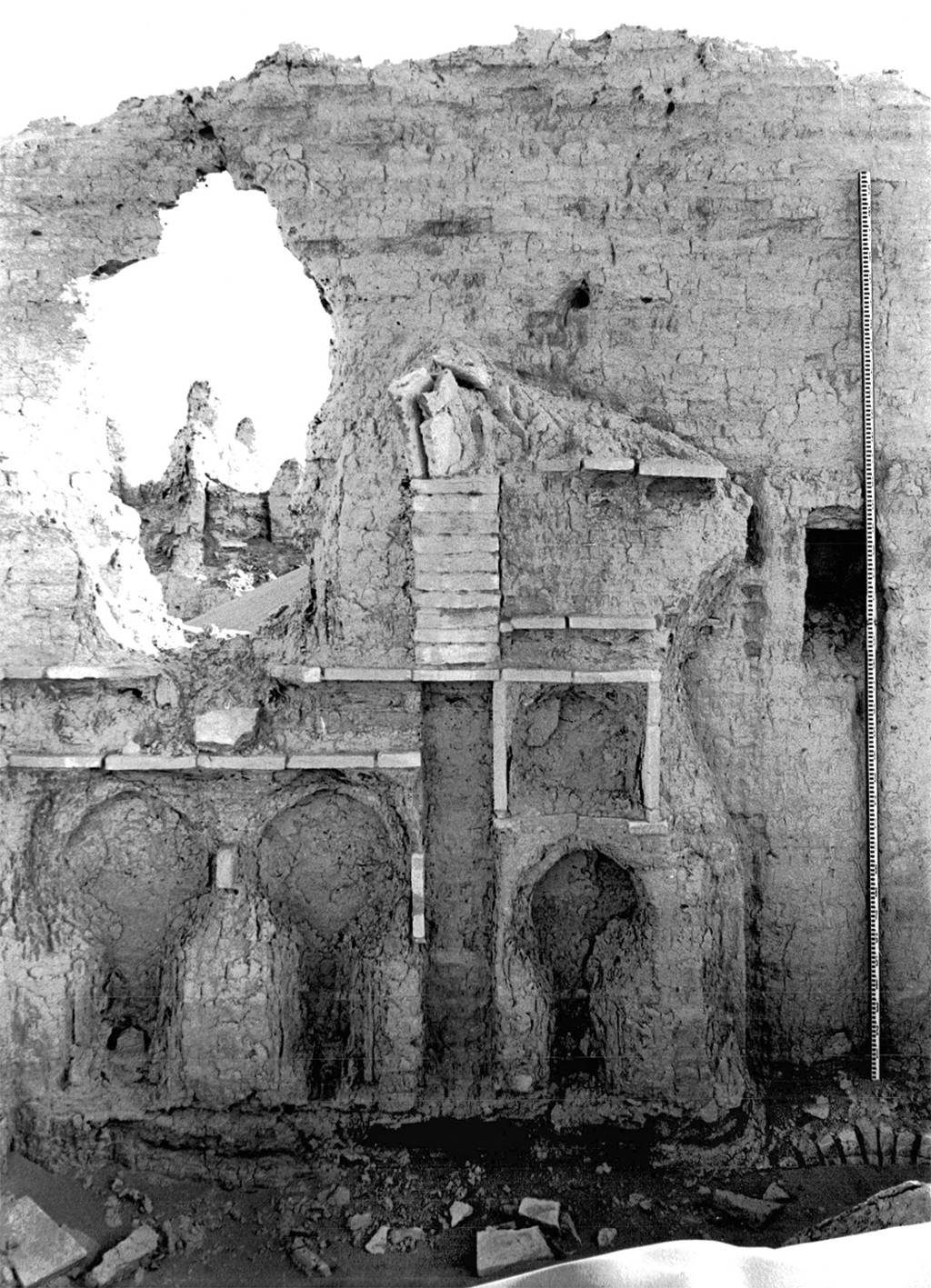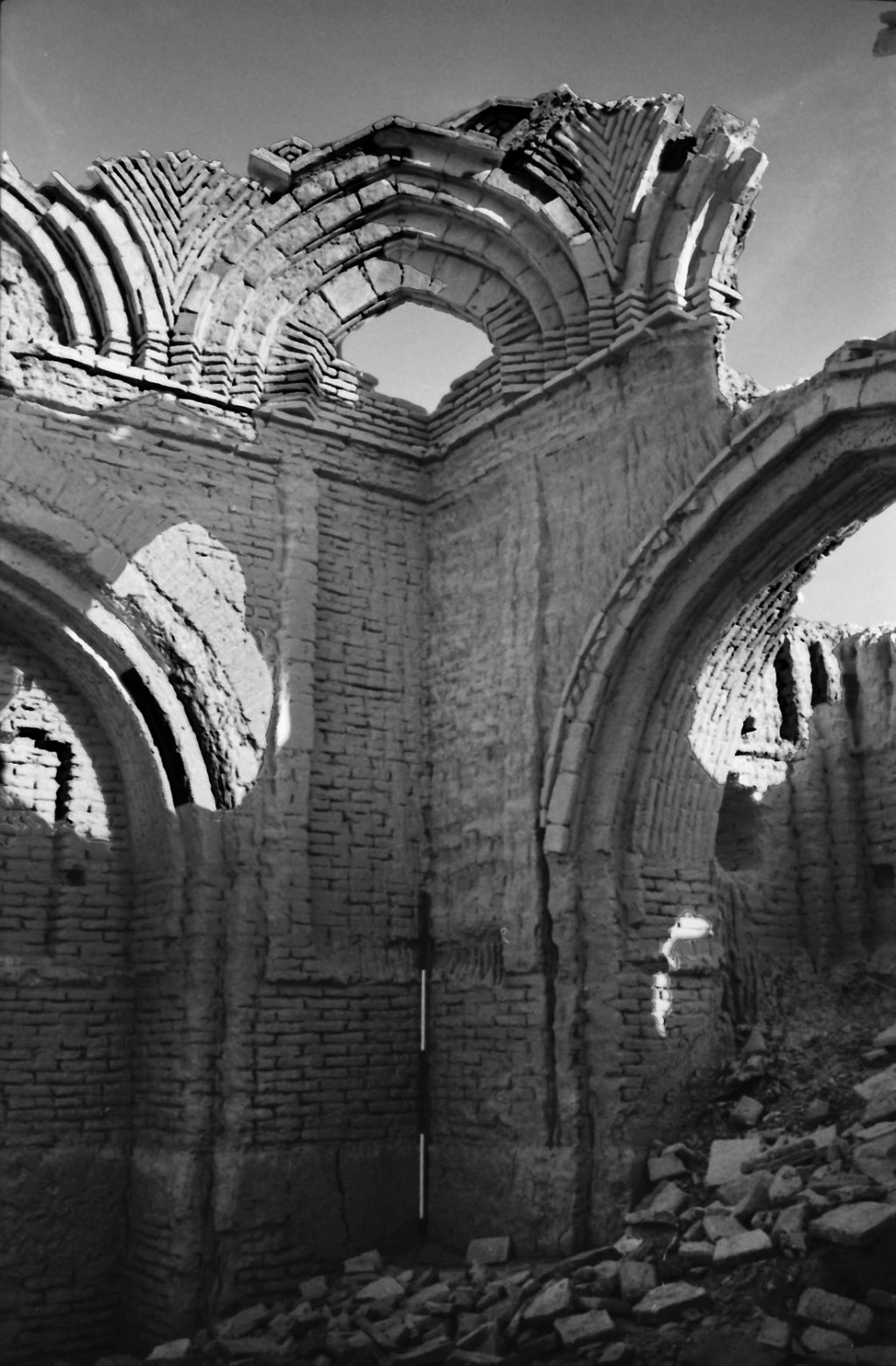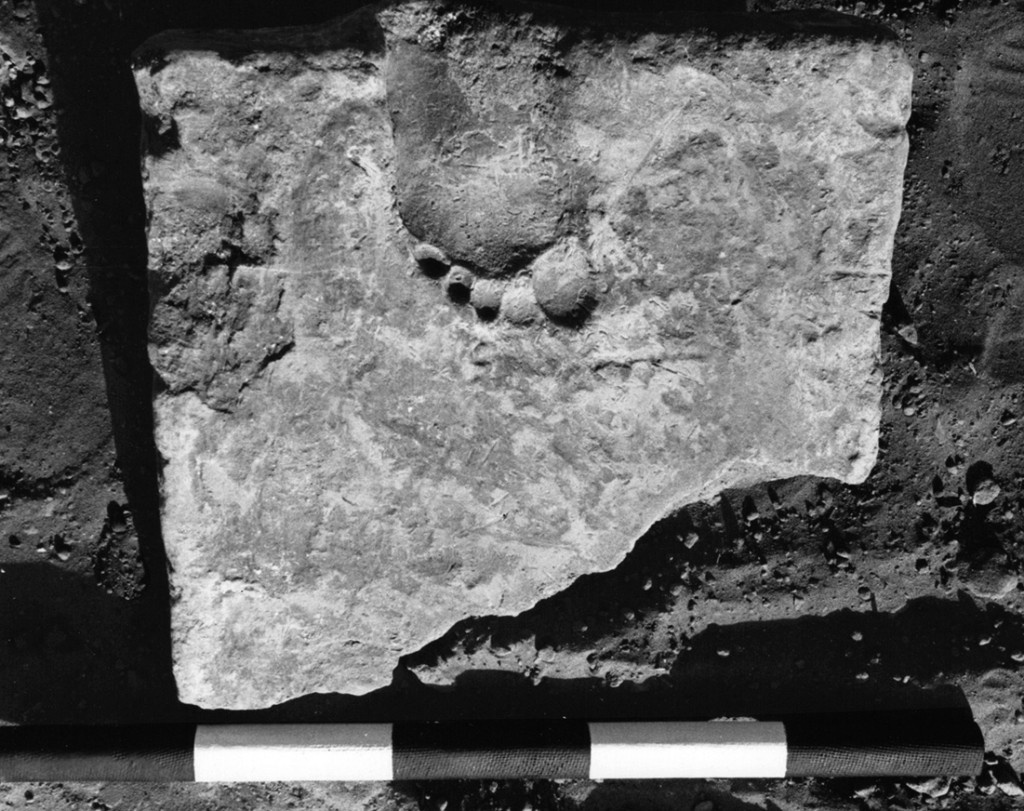Building Materials and Architectural Decorations
In the absence of stone as a common building material in the Helmand Valley, buildings were constructed either of pakhsa (packed mud), sun-dried adobe bricks, or baked bricks. Changes in the sizes and styles of these bricks were an important chronological indicator and evidence of the resources available for building. Robbing and reusing baked bricks was another such indicator, as we found at Temple 215, where baked brick arch foundations had been robbed out. Besenval and Francfort demonstrated that Bronze Age and Early Iron Age mudbricks were rectangular and in dimensions representing a ratio of 1 :2 :4 to 1 :3 :6 with the longest side 45–60 cm in length. Bricks we measured at Lat Qala and Qala 169 fit these parameters. By the Parthian period, bricks had become square and 37–42 cm on a side. The bricks had become larger in Sasanian times and were often fired instead of sun-dried. Bricks in the sequence of Islamic periods get continually smaller, with the most recent being about 20 cm square. Pakhsa is used in various ways over different periods, for example to create the large platforms underlying Early Iron Age sites. Several distinctive kinds of bricks were also identified, such as the very thin, long bricks that were used to span arches in the Ghaznavid Lower Palace at Shahr-i Gholghola.
Ceramic elements were also used to decorate buildings. Lacking stone, Greek-style temple decorations were usually made of fired brick at Parthian sites like Khwaja Ali Sehyaka/Sehyak and Khwaja Kanur. Extensive use of baked brick as decoration is a feature of local Ghaznavid architecture. The positioning of bricks, sometime vertically, sometimes face flat, was also a form of decoration in the Saffarid and Ghaznavid periods. The keyhole arches of Timurid structures were another way of using simple mudbrick to create elaborate effects. While the brickwork is evident in our 20th century survey, many of the decorative walls of brick were originally covered with plaster and painted so their construction would not have been seen.
